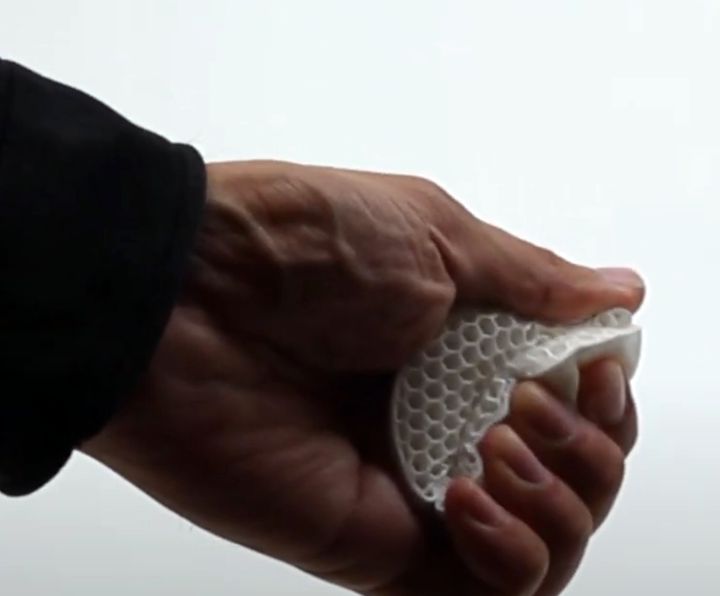
You may not have heard, but colorFabb markets a very unusual 3D printer filament called varioShore.
It’s a TPU material, meaning it is soft and flexible. That’s not news in the 3D printing community, but hear me out.
Flexible materials often vary in the degree of softness and flexibility. Some are limp like wet noodles, while others simply bend a bit. There is a method of measuring this property using a Shore durometer and the ASTM D2240 scale.
Typically flexible 3D printer filaments will be rated on this scale, which has several bands, like “Shore A” or “Shore D”. A rubber band might be 20A, and a pencil eraser would perhaps be rated 40A, whereas a shopping cart wheel might be 50D.
3D printer filaments carry (or should carry) these ratings so operators know what to expect when printed. Designs will require specific shore ratings for specific components. One example we’ve tested in the past was Fiberlogy’s 40D TPU, as an example.
While these flexible materials have been very successful, they all suffer from one limitation: you get only one Shore rating in a single print, unless you change materials or have a multi-material device. And even then you get only what is provided by the specific materials you use.
colorFabb varioShore Filament

Enter colorFabb’s varioShore material. This is a 92A TPU, but it has a very unusual property: at certain temperatures it “foams” internally when extruded. The foam introduces air within the print that has no strength, thus allowing some flexibility. It also reduces the weight of the print.
But it doesn’t foam equally — you can apparently vary the amount of foam by adjusting the temperature and other extrusion parameters dynamically during the print. colorFabb explains:
“varioShore TPU allows users to vary the density of the material by adjusting temperature and material throughput (speed & layerheight). At temperatures between 200 and 250C the materials will start to expand to roughly 1.4-1.6 times its original volume. This means the material can be printed at low flow rates (60-70%), to compensate the active foaming, which in return gives very soft printed parts. Between 190-200C the material can be printed without foaming, resulting in different haptics and harder prints compared to foamed samples.”
The implication here is that it would be possible to 3D print an object with varying degrees of flexibility throughout the object. Imagine, for example, a semi-rigid cylinder with a flexible grip. This type of unusual object could be produced with this material.
It may also be possible to develop “flexible gradients” with a gradual change in print parameters over a region of the print.
What I wonder about is the complexity of the GCODE required to accomplish this feat. Most 3D print slicers are designed to operate with consistent parameters throughout the print, or at least throughout defined geometric regions of the print. It would be challenging to develop slicing software that could generate that type of effect.
It could also be challenging for printing itself, as the printer might have to occasionally pause to adjust its heat. Complex variable-shore objects might take longer to print because of this.
However, varioShore does appear to be an incredibly interesting material that could be used in a wide variety of applications, some of which have likely never been attempted with 3D printing previously.
Via colorFabb
